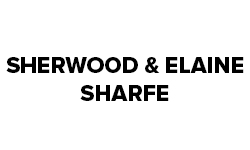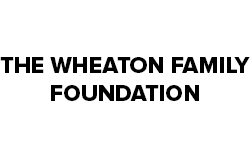Part B: Learning Plan
- Examine their relationship to the environment and consider their actions as Citizens connected to self, community, and place.
- Consider the environmental impact of their decisions on their community, province, nation and world and think about practices for sustaining the environment for future generations.
- Consider possible economic changes Canada may experience in the future.
- Consider how possible economic changes that Canada may impact decisions regarding environmental concerns.
QUESTIONS TO GUIDE INQUIRY
Teachers may want to consider putting the questions into a “Before, During, After” chart to note the changes in students’ thinking as a result of the inquiries.
- How do you control the impact of your actions/decisions?
- How far reaching are the impacts of your actions/decisions?
- What responsibility do you have to balance personal needs with the community’s/global needs?
- Where is the balance between personal good and collective common good?
- What role does worldview play on the use of resources?
- What is the power and responsibility of the individual to make a difference in the world?
- What are the responsibilities of the different levels of government to make a difference in the world?
- How can citizens monitor the leaders of our country and hold them accountable for decisions made?
- What role does empathy play in citizenship?
- What role does empathy play in sustaining the environment?
- Is there a place for empathy in economic development?
CONNECT TO TOPIC AND SURFACE STUDENTS’ THINKING ABOUT …
- Pose the essential and guiding questions and allow students to discuss their thoughts on the matter.
- Determine what the students know, understand, need to be able to do to master/answer the essential questions (connect to content). Additional guiding questions can be added as required. Students are encouraged to add their questions to the others.
- Create Know, Want to know, Learned Chart – identify vocabulary that requires development
- Surface any additional questions students might have as a result of their discussions about the essential questions.
- How do you control the impact of your actions/decisions?
- How far reaching are the impacts of your actions/decisions?
- What responsibility do you have to balance personal needs with the community’s/global needs?
- Where is the balance between personal good and collective common good?
- What role does worldview play on the use of resources?
- What is the power and responsibility of the individual to make a difference in the world?
Students have been talking about influences on decision-making and considerations that make decisions solid/good decisions.
Ask students to list the decisions they make in a day, week. i.e. clothing worn; programs watched; music listened to; food eaten; games played. Identify and list the influences to those decisions.
Have students complete a questionnaire that could be used again at the end of the unit. Responses are:
Usually Sometimes Hardly ever.
1. Do you use reusable water bottles?
2. Do you use reusable lunch containers?
3. Do you microwave your lunch?
4. If you go to get a slurpie, do you reuse your cup or bring your own cup?
5. Does it matter to you where your clothing comes from?
6. Do you wear brand name clothing?
7. Do you use both sides of the paper?
8. Do you use the paper-recycling bin in your classroom?
9. Do you remember to turn the light off when you leave a room?
10. Do you use your bike to go to your friend’s house?
Post the results and ask students to rate the class’s sustainability practices. Why do they choose to be at this level? Process – Understanding geographic areas of Sask.
DEVELOPING UNDERSTANDING
Explain the importance for Canadians to sustainably manage their environment.
Concept Clarification- Inside the circle/Outside the circle Classification Process
Have students determine the reasons for the inclusion of words within and outside of the circle. Develop a definition of renewable and non-renewable. Use the Frayer model (Definition, Characteristics, Examples, Non-examples) to further clarify and demonstrate student understanding.
Renewable – Non-renewable
Inside the circle –renewable resources – forests, fish, water
Outside the circle – non-renewable resources – oil, minerals, coal, potash
Sustainable – non-sustainable
Students will apply their understanding of these terms in the following studies.
Examining how Canadians use our resources
Have groups of students:
- Choose a resource that students use regularly from the classification exercise above (Resource examples – forests, tar sands, coal, uranium, potash, water).
- Identify the resource as either renewable or non-renewable.
- Trace the processes for extraction of that resource.
- Show how the extraction of the resource impacts the environment.
- Present their information to the class – identify the impacts on the environment and begin to list and categorize the practices to acquire and use those resources according to sustainability and non-sustainability for the environment.
Based on the research and presentations have student groups develop a statement that summarizes how Canadians use our resources. Is it sustainable? What does our use of resources say about our relationship with the environment? What does our use of resources say about our beliefs regarding the use of the environment? Worldview of the environment?
- What role does worldview play on the use of resources?
Vocabulary
- climate
- sustainable/sustainability
- non-sustainable
- common good
- population distribution
- resources
- renewable
- nonrenewable
- geography
- topography
- demographics
- environmental footprint
EVIDENCE OF LEARNING
List the possible consequences of non-sustainable practices related to the use of resources (e.g., lack of resources for future generations, endangered species, climate change).
Citizen reaction
In groups have students identify policies and actions that contribute to sustainability (e.g., water conservation, informed decisions by consumers, reusing materials).
DR5.2
Examine the relationship between the environment and the lifestyle choices of the Citizens of Canada.
Have students discuss:
- Why do people live where they live?
- What influences a person’s decision to move to a specific location?
- What is the relationship between the environment and the Canadian economy?
Jigsaw Research and Study Process
Divide class into groups and give each group a specific climate area to learn about and present to class. Each group must find out the information in the questions posed below. Encourage students to present information learned in a variety of modes including speaking, writing, drama, multimedia, or other modes so that all students have an entrance point for demonstrating their learning and understanding. (i.e. a travel brochure, video, etc.)
Canadian Climate investigation
Canada has 7 different climate regions
– Pacific, Cordilleran, Atlantic, Great Lakes/St. Lawrence Low, Prairie, Boreal, Arctic
Assign each group of students a particular region. Have students identify the:
- location and area of Canada and describe the geography/topography
- climate of the specific region and the causes for the climate
- population of the region, numbers, demographics
- resources available in the region
- economy of the region
Have students re-visit the questions. How has their thinking changed?
- Why do people live where they live?
- What influences a person’s decision to move to a specific location?
- What is the relationship between the environment, resources, and the Canadian economy?
See appendix for climate graphic organizer.
Resource Use – Have students compare and contrast use of resources and identify the effect of worldview on resource use.
Divide the class in half. Assign each group a specific research perspective. Have students identify the respective beliefs for each area and provide examples of those beliefs in action. For insight into traditional First Nation worldview, use the resource, Treaty Essential Learnings: We Are All Treaty People.
EVIDENCE OF LEARNING
- What were the similarities between the two worldviews? What are the differences?
- Why are Indigenous people considered natural stewards of the land?
- What is the relationship between Canada’s environment and the distribution of population and economy? Develop a synopsis statement from each Worldview perspective – Indigenous and European.
- Speculate upon how contrasting worldviews toward the natural environment may affect the use of resources. Develop a motto or slogan from each perspective.
APPLY AND EXTEND KNOWLEDGE
- Elder
- Conservationist
- Botanist
- Chamber of Commerce Representative
- Governance Councillor
Consider the future economic changes that Canada may experience.
Future Predictions – using the Jigsaw Research and Study process have students research one of the areas and provide information for the class.
Study the current demographic and industrial make-up of Canada in the following specific areas.
- Senior citizen population
- Indigenous populations and traditional territories
- Birth rates
- Immigration rates
- Rural vs. Urban population
- Industrial Trends
- Resource Industries
- Technological Industries
- Economic Industries
Identify the process:
- current situation,
- make a future prediction,
- identify the specific climate areas affected,
- substantiate with evidence.
EVIDENCE OF LEARNING
- Consider possible effects/implications of your predictions on the local and provincial communities.
- Suggest counteractive strategies to protect the environment and reduce the environmental footprint.
- Identify steps to implement those strategies.
- Present their thinking to the class.
APPLY AND EXTEND KNOWLEDGE
- From the list of survey questions (pg. 9) discuss the impact of their actions and consider alternate practices. Identify the steps to implement those practices.
- Suggest strategies for getting citizens to live in a more environmental sustainable way.
- Choose an existing governmental policy or strategy that is intended to impact resources and the environment. Identify the pros and cons of the policy/strategy and suggest ways to strengthen it.
Revisit the initial student thinking on the essential questions. Note how the thinking has changed.
- How do you control the impact of your actions/decisions?
- How far reaching are the impacts of your actions/decisions?
- What implications does this knowledge have for your actions?
- What responsibility do you have to balance personal needs with the community’s/global needs?
- Where is the balance between personal good and collective common good?
- What is the power and responsibility of the individual to make a difference in the world?
- What role does empathy play in citizenship?
- What role does empathy play in sustaining the environment?
- Is there a place for empathy in economic development?
- Why are treaty relationships important to all Canadians?
- What are the benefits of understanding treaty promises?
- What are the hazards of not understanding treaty promises?
STUDENT CITIZENSHIP JOURNAL OPPORTUNITIES
- Reflect on the role that sustainability plays in citizenship.
- Reflect on your beliefs and actions. Do they demonstrate empathy for the environment? What examples do you have to support your thinking?
- How would you rate yourself as a citizen who cares about the environment? What examples do you have to support your rating? What would it take to become better?
- Why do humans engage in non-sustainable practices? What would it take to change people’s practices?
- What is a citizen’s responsibility to the environment?
© 2024 Concentus Citizenship Education Foundation Inc. All Rights Reserved.










